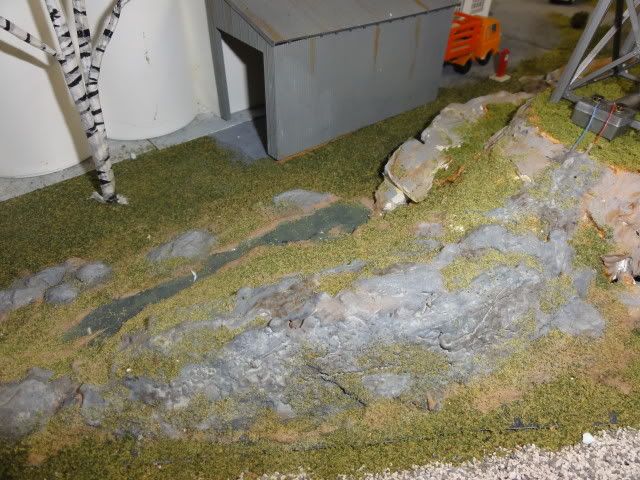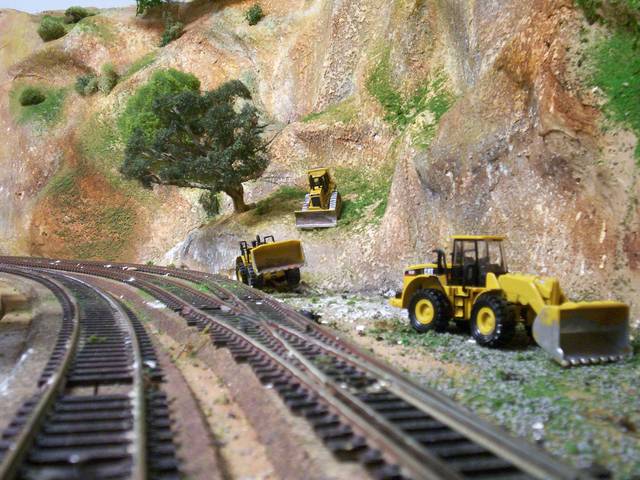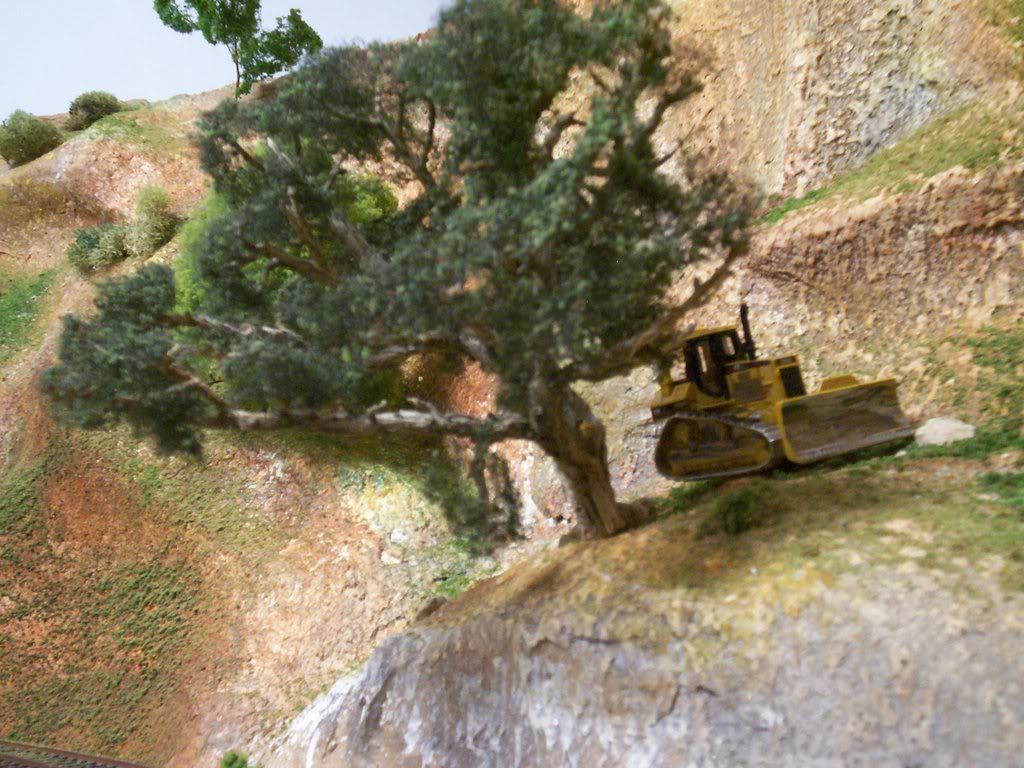I have 2 five gallon buckets of drywall mud, left over from various drywall jobs. Has anyone use this to make hills, mountains etc.on their layout. I was thinking of using it in conjuction with foam board that I will be using to make hills and some small mountains on my layout. Your thoughts Ideas would be appreciated.
I sometimes use drywall compound thinned with water to dip paper towels in making scenery. Usually I throw in some powdered tempera paint as well to kill the white look.
I have also mixed up some type of “ground good” using drywall mud and apply with an old paintbrush. This is drywall mud, vermiculite, water, and paint stirred together for ground cover. I almost prefer drywall mud to plaster of paris as it has much longer working time.
Jim
I use drywall mud almost exclusively, over foam. It takes a while to dry completely, and may crack if applied to thick, but I like it’s texture and work ability.
Nick
Hi,
In building my current layout, I used both plaster and drywall mud. The mud goes on easily and certainly with less mess (as it was premixed). However, any kind of thickness will cause it to shrink and crack when it hardens. Repeated layers will solve that, but once the container was empty I went back to plaster with a little vinegar added to retard the set time.
Actually, what really worked nicely was the areas where the first coat was the mud, and successive coats were plaster. I guess what I’m really saying is that the mud is quick and easy for a base, but IMHO, not so great for a final coat.
I’m a big fan of drywall mud. I’ve used it over pieces of foam to create hills and also for roads. It will crack doing this but the cracks are easily filled if you want to. in some cases the cracks add to the scene. Also you can go back with a wet foam brush and touch things up.
I’m a newbie when it comes to scenicing but the attached picture shows a hill with grey limestone croppings.

The out croppings are drywall mud and I just dabbed in the mud and didn’t take time to do any thing else.
Happy Railroading
Bob
Drywall mud and foam is a great combo. The guy in this video shows how to make good use of it.
http://www.youtube.com/watch?v=D1D4KBB_GC4
There is drywall mud used to fill cracks on these foam rocks. Done essentially the way it is done in the video.

Brent
As others have said, keep the layers thin to prevent cracking. Probably no more than 1/8". You can always build up multiple layers if you need it thicker. I use it for all my scenery. The only thing I use plaster for is rock moldings. One thing I like about it is that it can be moistened and re-worked. When I make a road from drywall compound, after it has hardened, I wipe it with a damp sponge and that makes the surface smooth. It beats messy sanding. For landforms, I make the rough shape from styrofoam, cover that with plaster cloth to an approximation of the shape I want, then apply drywall compound over the plaster cloth to get the final shape. Hint: if you’re going to be storing it in its container for a long time, pour a little water over the top of the compound to keep the air away from it and put the lid on tightly. When you go to use it again, just pour off the water.
You can also use woodland scenics earth tones to color it.
Love it
My Ground Goop :Dry wall mud, latex paint for color, saw dust for texture, Lysol to keep the mold down and water for texture. Thinned it paints over carved foam. Thick it carves for rock walls. Fpr carving, it gives 24 to 36 hours to finish, unlike Plaster that will go hard in minutes or hours.
I use drywall mud for my roads…works great and is easy to work with. Do it in layers as others have suggested, or you’ll get cracks. I’ve kept some of my cracks in the road to add to the effect. Plus its re-workable…whats not to like?
Woodman I wish you lived next door LOL. I also get mud from odd jobs.
Here is a method a friend and I came up with, and I love it, being foam is rather expensive and I model a mountain railroad we elected to go with alum screen.

I twist, fold, crumple the screen, unroll and use the side that resembles the look I want, if not I do it over. straighted out so that I can spray an aheasive(Permatex spray tack works great, a water based adheasive wont) on the back side of the screen, and apply the plastic wrap, like saran wrap. Staple and hot glue in place, hot glue works as if its welded, can add more over the top in small areas to get more rock outcropping if you wish. This takes about ten minits to do three square feet while sipping a cup of coffee LOL
Thin the mud a tad and brush on, the plastic wrap glued to the back, makes for a thinner first coat, drys quicker, no leakage to the floor, and dont worry about getting all the screen covered. First coat give it a hard structure and the second and third if need be to cover compleatly.

This is just two coats over three years ago. I did experiment with a popcorn spray after, gave it a covered rock effect, My prized oak tree has been transplanted to the wifes farm, being she is getting into the hobby[bow]
Are we talking regular joint compound or lightweight joint compound here?
lightweight mud.
Thank you.